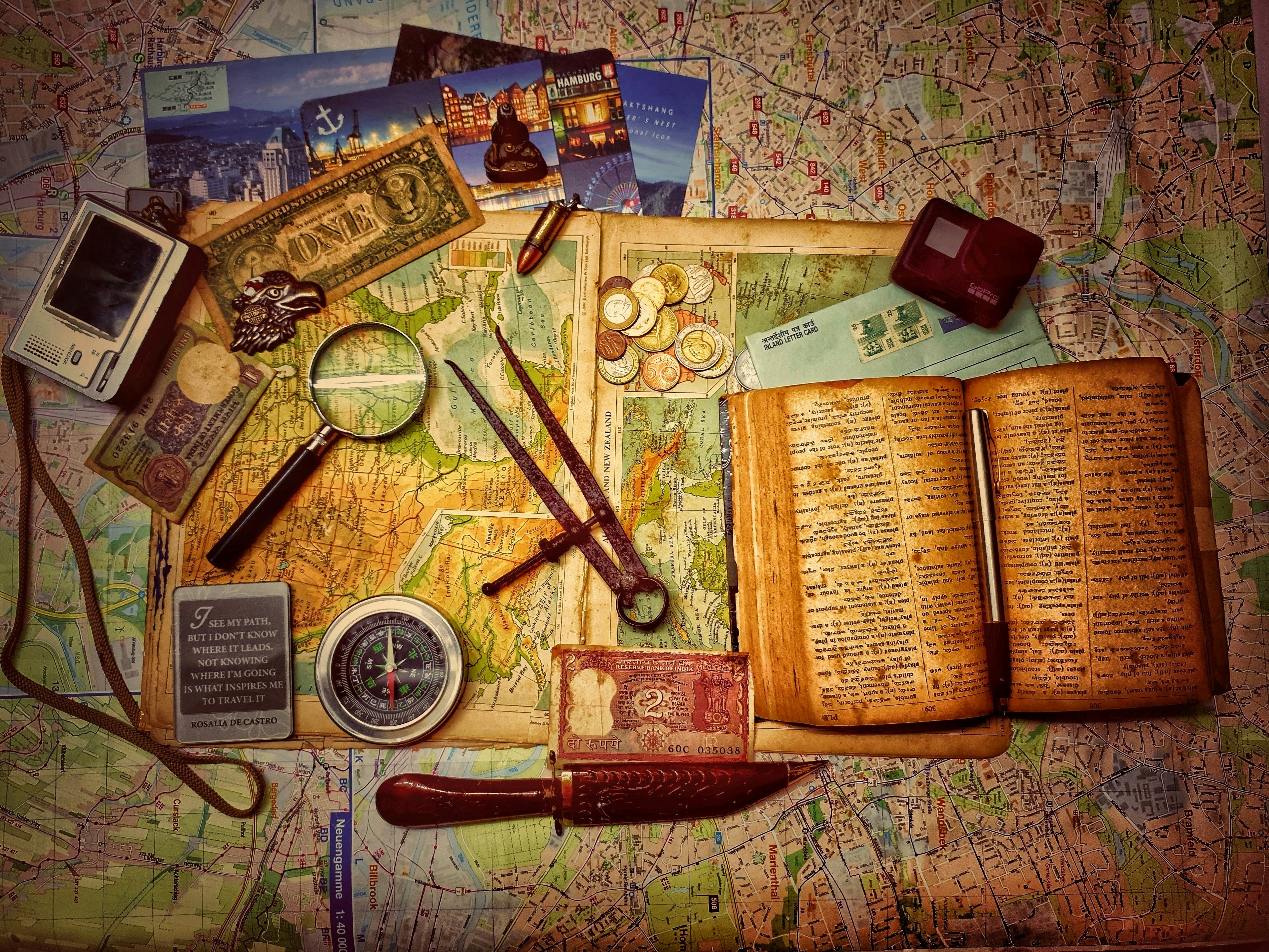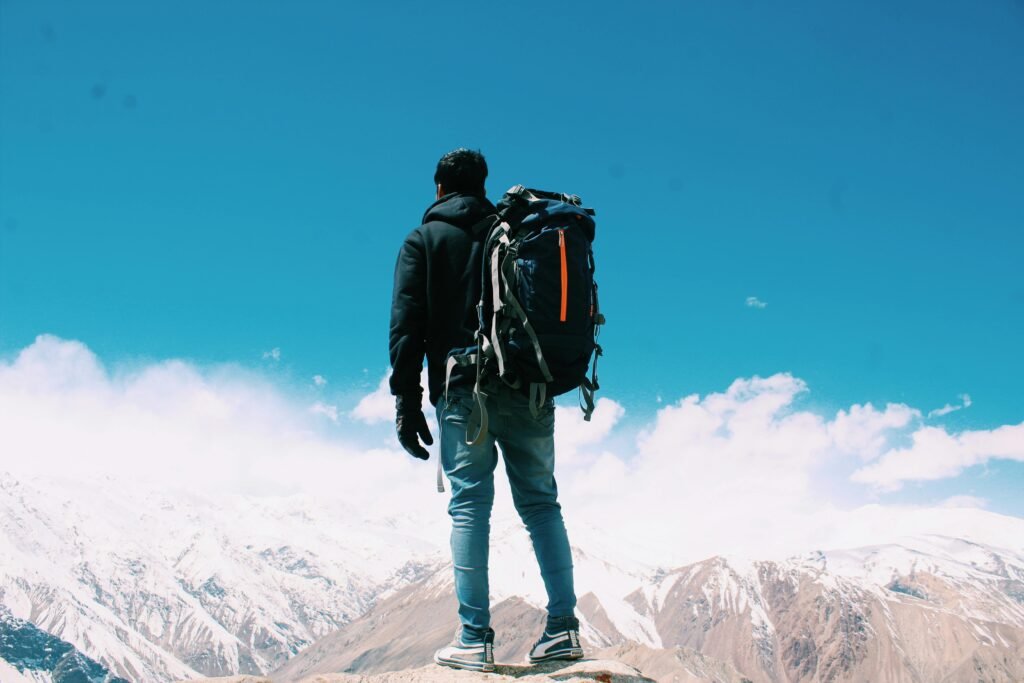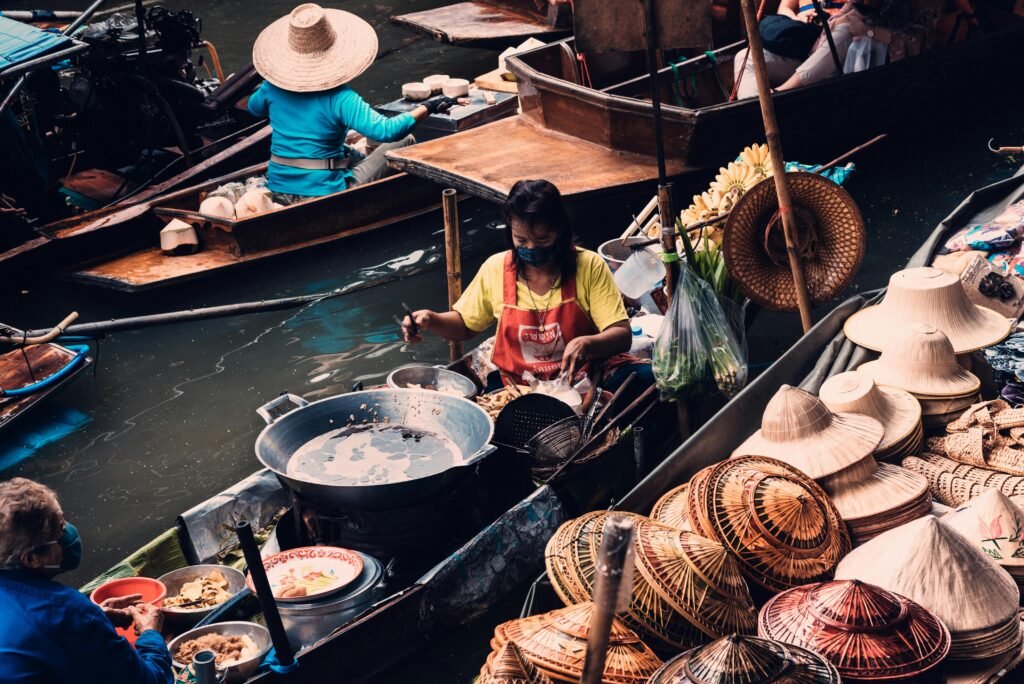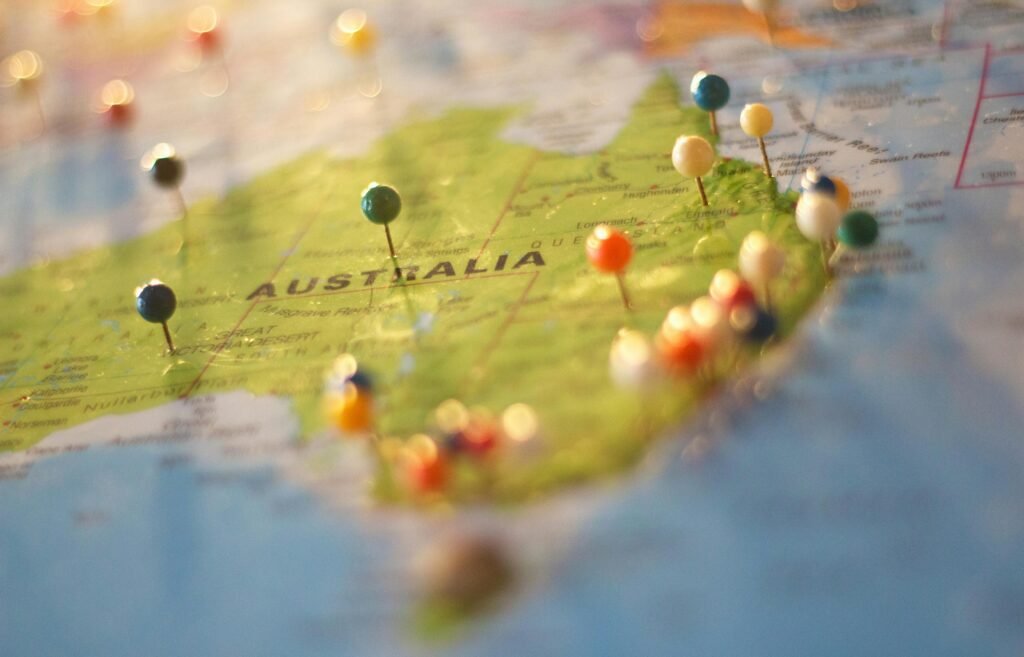Introduction: Defining the Tourist vs. Traveler Dichotomy
The distinction between tourists and travelers has been a topic of significant discussion within the realm of exploration and adventure. While both groups embark on journeys to discover new places, their approaches and interactions with destinations markedly differ. A tourist is typically associated with a more superficial manner of engagement, often visiting popular landmarks, staying in established hotels, and participating in guided tours. This model of exploration tends to emphasize convenience and highlights well-known attractions, contributing to a checklist-style experience.
In contrast, a traveler seeks deeper connections with the cultures, traditions, and local communities they encounter. The traveler prioritizes immersion over mere observation, often opting for experiences that allow for meaningful interactions, such as dining with locals, exploring off-the-beaten-path locations, or learning traditional crafts. This kind of exploration fosters a more profound understanding of the destination, transcending the typical tourist experience that can sometimes feel transactional. By prioritizing authenticity, travelers are often more open to adapt, learn, and grow from their experiences.

The growing discourse on this dichotomy encourages individuals to reflect on their own travel habits and motivations. Are they visiting a destination to tick off items from a list, or are they striving to fully engage with the environment around them? This exploration of the tourist versus traveler mindset not only reveals personal preferences but also highlights the broader implications of how we experience the world. The subsequent sections will delve into personal anecdotes that illustrate transformative moments, showcasing how perspectives on travel can evolve from a mere tourism approach to one deeply rooted in experiential learning and cultural engagement.
The Trip That Sparked My Curiosity
My journey toward becoming a true traveler began unexpectedly during a trip to a small village nestled in the Italian countryside. Initially, my intention was to observe iconic landmarks and indulge in the culinary delights typical of Italian tourism. However, my experience quickly evolved, challenging my preconceived notions about what travel could mean. It was not merely about ticking items off a checklist; it became something much deeper and profound.

As I wandered away from the popular tourist sites, I stumbled upon a local market, vibrant with life and color. The marching sounds of vendors calling out their goods captivated my senses. I was drawn to a small stall where an elderly woman offered homemade bruschetta. Through a delightful exchange of broken Italian and gestures, I learned the stories behind her recipes, passed down for generations. This moment marked my first realization of the richness of personal interactions that can be missed when following well-trodden paths.
Furthermore, my encounters with the villagers provided insights into their daily lives, which contrasted sharply with the sanitized versions often presented to tourists. A lunchtime gathering at a local family’s home revealed a warmth that I had never anticipated. It was here that I began to understand the importance of cultural contexts—the nuances that make each destination unique and valuable beyond its physical attractions. Each story shared filled my heart with an appreciation for this world far beyond mere sightseeing.
This remarkable trip not only stoked my curiosity but instilled a desire to explore further. I learned that being a traveler is about embracing experiences that connect you to the essence of a place, encouraging a deeper understanding. The journey taught me that the most significant moments often lie hidden beneath the surface, waiting to be discovered when one ventures off the beaten path.
Confronting My Comfort Zone: A Cultural Exchange
Participating in a cultural exchange program marked a pivotal change in the way I perceive travel. Initially, I sought experiences that catered to my comforts—a hotel with all amenities and a guided tour through familiar attractions. However, during this program, I was encouraged to step far outside of my comfort zone. This experience not only broadened my horizons but also redefined my understanding of the essence of travel.
As I arrived in a small village, I was welcomed by locals who were eager to share their culture. This moment presented a valuable opportunity for me to immerse myself in a way that traditional tourism seldom allows. Rather than observing from a distance, I was invited into their daily lives—helping prepare traditional dishes, participating in local festivals, and learning their folklore. Each interaction was an enlightening exchange that deepened my appreciation for their unique traditions.
The most significant experience occurred when I joined a local family for a meal. It was not just the food that was shared; stories flowed freely. Language barriers melted away through gestures and laughter, creating a bond that was enlightening and heartwarming. I learned about their values, struggles, and joys, touching on aspects of life that most tourists would overlook. Such a connection resonated with me and prompted a realization: being a traveler means embracing the unknown and valuing authentic experiences over mere selfies in front of landmarks.
This cultural exchange experience reshaped my identity from that of a casual tourist to a genuine traveler. I understood that true exploration involves engaging with others, embracing differences, and stepping outside one’s comfort zone. It redefined my travel priorities—each journey now focuses on connections rather than checklists, allowing me to truly explore the world in its rich diversity.
Lessons from a Misadventure: Getting Lost in a Foreign City
Traveling often creates opportunities for learning, and nothing encapsulates this idea more than my experience of getting lost in a foreign city. As I wandered through narrow cobblestone streets, initially filled with a sense of dread, I soon discovered a world that was hiding in plain sight. What initially felt like an overwhelming misadventure quickly transformed into a beautiful lesson on the importance of embracing unpredictability while exploring new destinations.

In a bustling city where the language was unfamiliar, every turn I took felt like a gamble. The streets, often adorned with local art and infused with aromatic street food, led me to charming alleyways I would have otherwise missed. The experience illuminated the idea that sometimes, the best journeys arise from unexpected circumstances. Popular tourist attractions are enticing, yet they often overshadow hidden gems that provide a deeper connection to local culture. Getting lost afforded me the chance to engage with the locals, observe daily life, and learn about the city beyond typical tourist paths.
The beauty of serendipity became apparent as I stumbled upon a quaint café tucked away from the hustle. This unplanned encounter not only nourished my appetite but also opened conversations with the owner, who shared fascinating stories about the neighborhood’s history. Such moments exemplified how misadventures can lead to meaningful connections and insights that enhance one’s understanding of a place.
Ultimately, the experience of navigating an unfamiliar environment without a map taught me to let go of rigid itineraries and encouraged a more intuitive approach to travel. Instead of adhering exclusively to guides or predefined paths, embracing the unexpected created unforgettable memories. This perspective has since shaped how I explore the world, allowing for more enriching experiences that cater to the essence of being a traveler rather than just a tourist.
The Importance of Slow Travel
In an increasingly fast-paced world, the concept of slow travel has emerged as a transformative approach to exploring new destinations. Rather than cramming numerous sights into a short trip, slow travel encourages individuals to immerse themselves in their surroundings, leading to memorable experiences and deeper connections with both people and places. One particular travel experience that altered my perspective on exploration occurred during a month-long stay in a small coastal town in Italy. By spending an extended period in this charming locale, I was able to uncover hidden gems that are often overlooked by those merely passing through.
Engaging with local residents became a cornerstone of my journey. I found myself frequenting the same cafés and markets daily, forging friendships with shopkeepers who shared stories about the region’s history and traditions. Through these interactions, I learned about traditional cooking techniques and local festivals, enriching my experience and allowing me to appreciate the significance of the local culture. This slower, more intentional approach highlighted the reality that travel is not solely about visiting sites but about building relationships and understanding the world around us.

Moreover, dedicating more time to fewer locations fosters a sense of mindfulness, encouraging travelers to savor each moment. Instead of hurrying to the next destination, the opportunity to slowly wander through narrow streets, watching the world unfold, led to a greater appreciation of the beauty and nuances of daily life. This method emphasizes quality over quantity in travel experiences, creating richer stories and lasting memories that stay with us long after we return home. Slow travel may require more planning and patience, but the rewards are substantial, transforming our journeys into profound explorations that resonate on a personal level.
Building Connections: Friendships Made on the Road
Traveling often presents an opportunity for individuals to immerse themselves in new cultures and environments; however, it also provides a unique platform for forging meaningful connections. During my explorations, I encountered fellow travelers and local inhabitants whose friendships significantly transformed my experience. These relationships not only enriched my journey but also instilled a sense of belonging that can often feel elusive while on the road.
As I navigated bustling markets in Marrakech and walked the serene streets of Kyoto, the individuals I met along the way became more than mere acquaintances. For instance, in a small café in Lisbon, I struck up a conversation with a local artist. Our exchange on creativity and the hidden gems of the city morphed into a lasting friendship. Such relationships exemplify how travel can create bonds that transcend geographical boundaries, crafting a community of shared experiences.
Moreover, my encounters with fellow travelers often led to significant moments of camaraderie. On a hiking trip through the mountains of Patagonia, I teamed up with a group of adventurers who encouraged me to push my limits. Together, we conquered challenging trails, shared laughter around campfires, and exchanged stories of our respective journeys. These shared endeavors turned solitary exploration into a collective adventure enriched by laughter, support, and newfound friendships.
Through these interactions, I discovered that cultivating connections enhances not only my understanding of the places I visit but also deepens my appreciation for the diverse tapestry of human experiences. Whether it is through shared meals, cultural exchanges, or collaborative adventures, each friendship made on the road has the potential to change our perspectives on travel, turning it into a rewarding journey of connection and community.
Understanding Sustainable and Responsible Travel
In recent years, awareness surrounding environmental and social issues has significantly influenced my approach to exploring the world. Travel, while offering the exhilaration of new experiences, comes with a profound responsibility towards the destinations we visit. A pivotal moment in my journey occurred when I witnessed firsthand the detrimental effects of overtourism on a small island community. This experience served as a wake-up call, underscoring the importance of embracing sustainable travel practices that prioritize the well-being of local environments and cultures.
Sustainable travel, at its core, emphasizes reducing one’s ecological footprint while engaging meaningfully with communities. Each destination offers unique traditions, customs, and values, and it is imperative to approach these interactions with respect and empathy. For example, I have learned to participate in local customs and support small businesses, which not only enriches my experience but also provides economic benefits to the residents. This shift in mindset has led me to prioritize experiences that allow for a deeper understanding of local cultures, fostering connections rather than mere transactions.
Moreover, understanding the impact of climate change has influenced my travel choices. I now opt for modes of transport that emit less carbon, such as trains or buses, rather than flying whenever feasible. Engaging in activities that promote conservation, like volunteering for wildlife protection or participating in community clean-up efforts, heightens my awareness of the environment and reminds me of the responsibility I carry as a traveler. By incorporating these sustainable practices into my adventures, I am not only enhancing my own experience but also contributing positively to the communities I visit.
Travel as a Personal Journey and Growth Experience
Traveling is often portrayed as a mere escape from daily routines, yet it holds a profound potential for personal transformation. Many individuals embark on journeys not solely to visit tourist attractions but to gain insights into themselves and their place in the world. For instance, during a trip to a remote village, I found myself immersed in an unfamiliar culture, which expanded my perspective on life. This interaction with locals and their simple way of living prompted me to question my own values and priorities, highlighting the power of travel as a catalyst for self-discovery.
Each journey provides unique opportunities for reflection and growth. Whether it was navigating the bustling streets of a foreign city or hiking in the tranquility of nature, these experiences challenged me in ways that prompted significant personal development. I learned to adapt to new situations, communicate effectively across language barriers, and embrace uncertainty. Such experiences sharpened my problem-solving skills and instilled a sense of resilience that I had previously underestimated.
Moreover, travel acts as a bridge to understanding diverse perspectives, helping to forge a more nuanced worldview. I recall an instance while volunteering abroad where I worked alongside individuals from various backgrounds. This collaborative effort deepened my appreciation for cultural differences and underscored the importance of empathy in human interactions. The lessons learned here transcended geographical boundaries, reverberating throughout my everyday life after returning home.
In essence, travel serves not only as a means to explore new environments but also as a profound journey of personal growth. Each destination presents a unique story, offering insights that can reshape our beliefs and attitudes. As I reflect on my experiences, it becomes clear that travel is less about the places we visit and more about the transformative moments that alter our understanding of ourselves and others. This holistic approach to exploration inspires a pathway to becoming not just a traveler, but a lifelong learner.
Conclusion: Embracing the Traveler Mindset
In reflecting on my journey, I have come to appreciate the profound distinction between being a tourist and embodying the essence of a traveler. This transformation was not merely a change in terminology but a fundamental shift in how I engage with the world around me. As I navigated new terrains and interacted with diverse cultures, I discovered that adopting a traveler’s mindset allows for deeper connections and richer experiences.
One of the most significant changes in my perspective has been the importance of immersing myself fully in the local culture. Whereas tourists often follow established paths, travelers seek to interact with their surroundings in a meaningful way. This might involve participating in local traditions, trying authentic cuisine, or even befriending residents, all of which cultivate a sense of belonging and appreciation for the place being explored.
Moreover, the way I approach each journey has evolved. Instead of adhering to rigid itineraries, I now prioritize flexibility, allowing me to embrace spontaneous adventures. These unexpected moments often lead to the most memorable experiences, whether it’s discovering a hidden gem in a bustling market or engaging in a conversation that provides insights into the local way of life. A traveler not only observes but also experiences—a crucial element that transforms mere visits into significant explorations.
Ultimately, these reflections serve as an invitation to others to reconsider their own travel habits. Embracing the traveler mindset fosters a deeper appreciation for the diverse world we inhabit, encouraging us to move beyond the surface and engage with the richness of our surroundings. I sincerely hope that as you embark on your adventures, you too may find the beauty in adopting this transformative approach to exploration.
